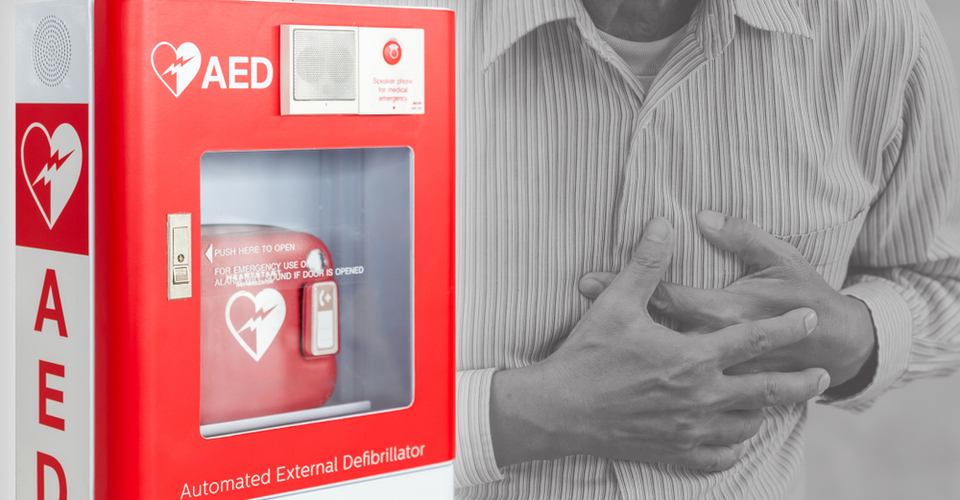By guest blogger Bill Rowe, Director of Content Development, Emergency Care
Recently, I saw a blog article comment about the survival rate for sudden cardiac arrest (SCA) in the United States. The gist of the comment was that although we have been promoting layperson involvement in sudden cardiac arrest for over 40 years, the national survival rate remains abysmally low.
It’s a bit frightening to think that I share that 40 years. My initial involvement in resuscitation came shortly after the 1973 American Heart Association conference and 1974 standards and guidelines in which layperson CPR training was rolled out to the public. We knew then that survival from SCA was an issue of time for both the initiation of CPR and defibrillation. The earlier you could start both, the greater the chance for survival. That critical key concept is still the same today.
A huge missing link back then was the absence of AEDs. The attempt of layperson CPR was to simply buy time for EMS defibrillation with a manual defibrillator. As you can imagine, time was certainly a large and difficult hurdle to get over.
The national SCA survival rate in 1975 was estimated to be somewhere between 5% and 10%
Fast forward to today. Publicly accessible, automated external defibrillators, or AEDs, are a reality. We have defined high-risk people and locations that may experience an SCA emergency. We are rediscovering the benefits of high-quality CPR skills, especially compressions, in improving defibrillation success and SCA recovery. We sure know a lot more now than we did back then.
Today, the estimated national survival rate for SCA essentially remains unchanged from 1975.
But all is not lost. After my shoulders sagged a little on seeing that blog response, I started thinking about the bigger picture and came to the realization that in certain cases we have been very successful in treating SCA at the layperson level. It’s all a matter of perspective.
Take Seattle. Most of you in the know understand the connection between Seattle and SCA. For many years it was promoted that if you wanted to survive a sudden cardiac arrest, you should move to Seattle. Why? Because a dedicated group of individuals, led by Dr. Leonard Cobb, decided to focus on SCA survival through a number of innovations in which layperson CPR and defibrillation could be done much earlier in an SCA emergency. As a result, the survival rate shot up and away from the national average. That thinking and search for improvement continues to this day.
Think about that for a second. The effort in Seattle hardly changed the national survival rate, but significantly changed it in Seattle and the surrounding area.
Survival is local.
Seattle was the first and most obvious example. With the addition of things such as AEDs, compression-only CPR, and high-performance CPR, there are so many more…
This is even being driven down to the individual level. Individuals with a high risk of SCA are now getting implanted defibrillators that shock immediately when SCA occurs.
So, there is a catch... and this is where you come in. Survival is local, but only because a dedicated effort was made to improve survival. As an emergency care instructor, you can influence others in the concept of being ready to manage an SCA event. It may not be for everyone, but I think you will find many willing to listen.
Like Seattle and the other examples above, readiness relies on an increased effort of preparation. Standardized two-year certification training is not enough. Consider some of the tools available to you to go beyond standardized training:
-
AED programs in which AEDs are purchased, strategically located to reduce response times, and maintained for immediate use
-
Frequent scenario-based drills in which trained providers can make decisions and perform skills in a realistic simulation
-
Short, frequent, hands-on practices with a CPR feedback device to sharpen and maintain compression and rescue breath skills
-
Simple, organization-wide training in doing compression-only CPR and using an AED
-
If there is a chance that there would be more than one trained provider present, the adoption of high-performance CPR concepts to improve the quality of resuscitation
We can help. HSI has a number of things available that can help you promote local survival:
-
ASHI CPR and AED, and MEDIC First Aid CarePlus CPR and AED – Fundamental training programs for lay providers that focus on initial training in performing CPR and using an AED. Adult and all ages options.
-
ASHI Basic Life Support – Healthcare-level training program in performing CPR, using an AED, and working in teams. All ages. Can be used by trained lay rescuers.
-
ASHI and MEDIC First Aid High Performance CPR – Layperson oriented training program that covers the concepts of high-performance CPR.
-
AEDs and AED Management – Discounted purchase of Phillips AEDS and One-Source Manager, an online tracking program to help maintain AED readiness. (Log into Otis for details.)
The point is simple. Improving SCA survival is dependent on the ability to decrease the time it takes to get CPR started and use an AED. While it may be difficult to make an impact on a national scale, we all have the ability to dramatically improve survival at a local level. What can you do to make this happen?







.png?width=600&name=HSI-CTA-EmergencyCareTraining%20(1).png)











Comments